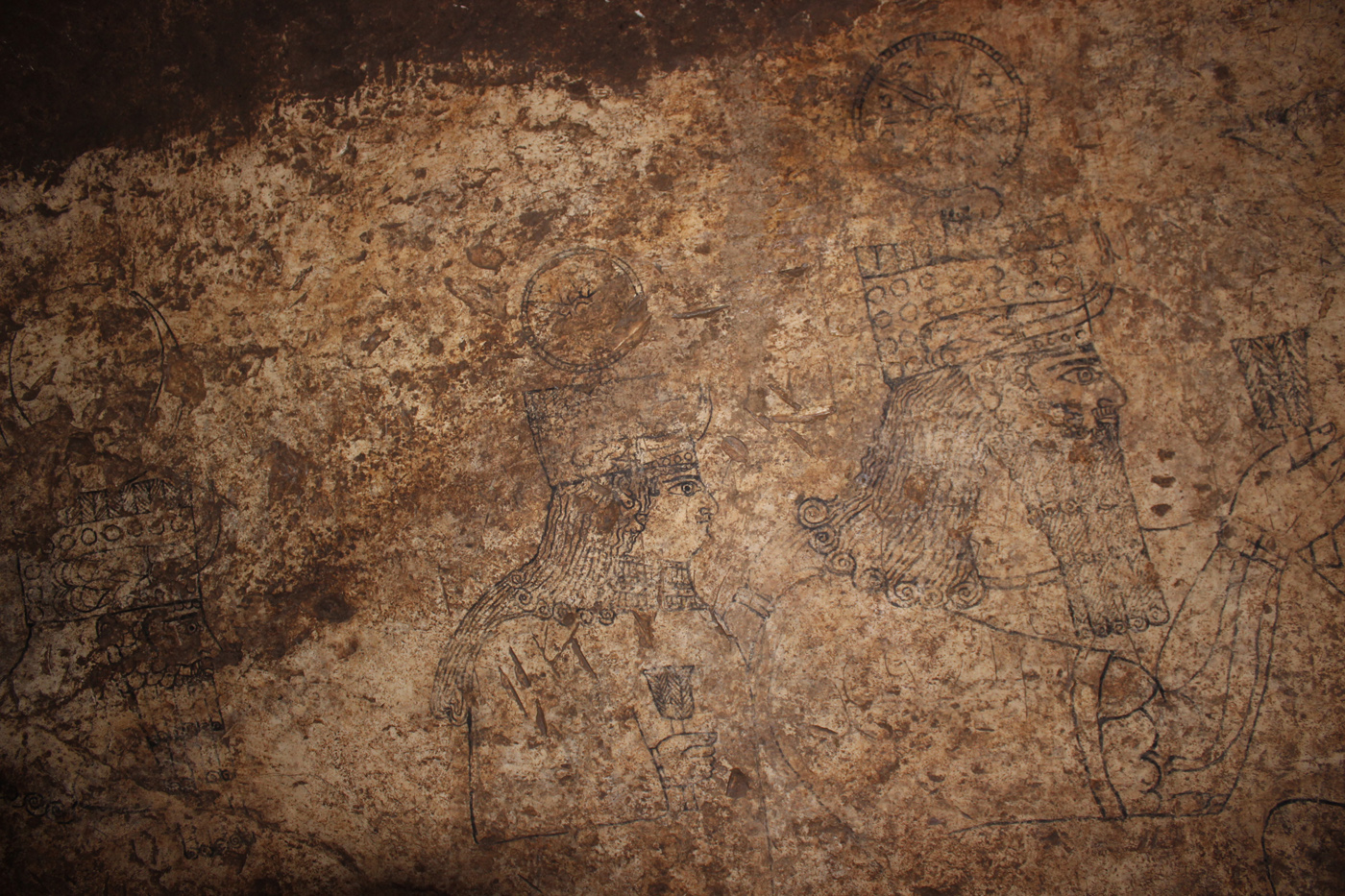
Usually the most interesting thing one can find in their basement is canned goods well past their expiration date, or a definitely haunted doll, but one particular find in the Turkish village of Başbük has put unearthed an underground chamber with far more historical implications. An incredible Iron Age rock incised art panel was discovered during a 2017 criminal investigation that led through a two-storey house to an opening carved into the ground floor by looters.
During a salvage excavation in 2018, researchers moved through the opening and into an antechamber carved into the bedrock, which in turn was connected to a long staircase obscured by centuries of accumulated sediment. Eventually, the team was able to access an upper and lower chamber, the deepest measurable point of which was 103 feet underground. In the upper chamber, removal of sediment revealed a panel depicting eight members of the Aramaic pantheon in procession.
The stunning find is “the earliest known example of a Neo-Assyrian period rock relief with Aramaic inscriptions, featuring unique regional iconographic variations and Aramaic religious themes.” This is according to an article published in the journal antiquity by the research team that worked in 2018 to gain access to the site before efforts were halted due to space instability.
The Neo-Assyrian Empire of the early first millennium BCE ruled the ancient Near East, divided into vassal city-states and provincial structures run by governors and local elites who “expressed their power through elements courtly Assyrian style,” the newspaper said. The Aramean people had lived in the region for centuries before the Assyrian conquest of Aram in the 9th century BCE.
Now under the legal protection of Turkey’s Ministry of Culture and Tourism, excavations are expected to resume after the site is secured, but the wall panel and its surroundings have already offered researchers a wealth of cultural information and avenues of investigation to follow. to pursue.
The processional scene features an entourage of gods, beginning with Adad (or Hadad) depicted in “the ‘storm god’ tradition of northern Syrian and southeastern Anatolian iconography” , evident from its triple lightning fork and circled star. Adad’s importance in the pantheon is denoted by the fact that he is rendered on a larger scale than the others. The storm god is accompanied by an Ištar type goddess consort wearing a double-horned, cylindrical polo shirts (crown) adorned with a star. The pair is followed by six more digits. Scholars conducted a detailed analysis of the figures to assess their relationship to the regional and historical evolution of styles over the hundreds of years of the Assyrian Empire.
“Comparison with Middle Iron Age reliefs in the region indicates that the Başbük deities and symbols are adapted from the Neo-Assyrian style into a local Syro-Anatolian tradition,” the paper’s authors write. “It is this Syro-Aramaic milieu – also confirmed by Aramaic inscriptions naming the main Aramaic deities – that seems the most likely context for the Başbük underground rock wall panel depicting a divine procession led by the Aramaic god Hadad, his wife ‘Attar’ata and Sin of Harran.
The discovery of this procession of the gods is a parade-worthy celebration in itself, but may prove to be only the beginning of historical revelations to be uncovered once stabilization efforts are complete and further research can be undertaken. carried out in the underground galleries.

